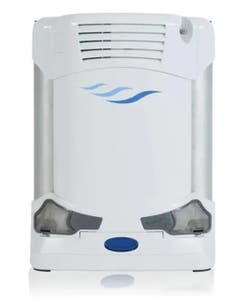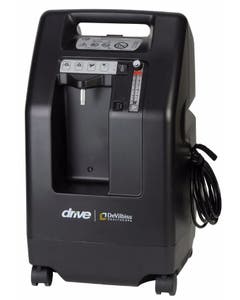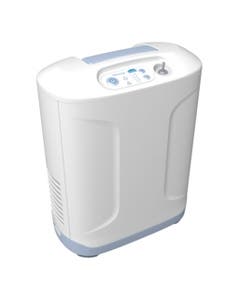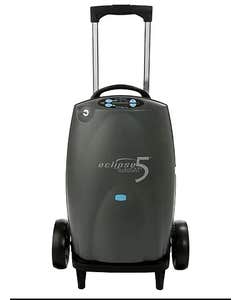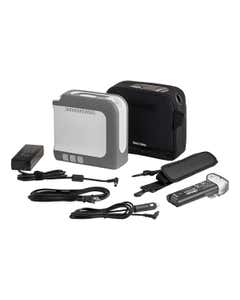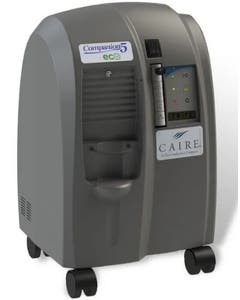We tend to think of air pollution as smokestacks and car exhaust, but indoor air can be just as worrisome as the air outside. Indoor air pollutants are often 2 to 5 times higher than outdoor air.¹ Taking steps to make air cleaner at home is essential for all of us, but improving air quality indoors is especially important for individuals managing respiratory illness.
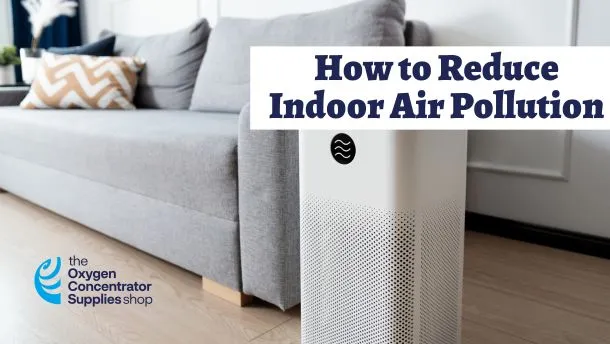
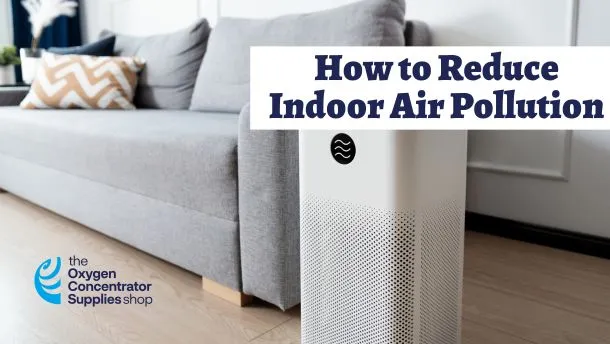
How Can You Reduce Indoor Air Pollution for Better Oxygen Concentration?
Solutions for indoor air pollution include:
- Replacing HVAC filters monthly
- Check gas appliances for carbon monoxide leaks
- Removing sources of mold in the home
- Removing shoes before coming indoors to eliminate pollen and other pollutants that can cling to footwear outside
- Cleaning the house regularly, especially dusting
- Running an air purifier
- Keeping pets clean and groomed to reduce dander
While these ideas work for anyone who wants cleaner air at home, they can be extra helpful for individuals managing a respiratory illness with an oxygen concentrator.
How Does an Oxygen Concentrator Work?
An oxygen concentrator captures air in a surrounding space and converts it into pure oxygen. The pure oxygen is then piped through a hose into a nasal cannula to improve breathing. The air passes through a substance in the oxygen concentrator known as zeolite which at high pressure captures nitrogen from the surrounding air, leaving the air oxygen-rich.
Oxygen concentrators offer pulse flow, which is an intermittent flow of oxygen or continuous flow, depending on the needs of the patients. Because oxygen is mechanically produced by oxygen concentrators, they are often preferred over oxygen tanks: the supply of pure oxygen is endless from an oxygen concentrator. Oxygen concentrators are also available in portable models that give patients with respiratory illness more freedom.
How Does Indoor Air Pollution Affect Oxygen Concentration?
Our ability to absorb oxygen from the air is adversely affected by airborne pollutants.
Pollutant gases such as carbon monoxide can reduce oxygen flow to body tissues and organs. In extreme cases carbon monoxide exposure can be deadly.
Mold spores can aggravate existing respiratory conditions like asthma and in some cases cause asthma to develop from long exposure. People with chronic respiratory problems may not realize the abundance of mold in their homes.
Many allergies can be triggered by exposure to pet dander and dust. Within an indoor environment, these airborne particles can become more concentrated and aggravate allergic reactions.
Major Reasons for Indoor Air Pollution
Indoor air pollution is caused by the concentration of airborne pollutants within a closed space. The higher concentration becomes the air you breathe daily, especially during inclement weather when people spend more time indoors. The air indoors can be made worse by certain factors:
- Aging gas appliances can often leak and emit carbon monoxide into the home
- Pets in the home can produce pet dander that remains airborne for long periods
- Dusty areas of the home can release that dust into the air
- Mold in damp areas of the home can release harmful airborne mold spores
- The presence of household chemicals and paints can emit harmful gases if not sealed properly
Ways to Reduce Indoor Air Pollution
Apply Polishes and Hair Sprays in Well-Exposed Areas
Beauty products such as nail polish and hair spray release harmful chemical pollutants into the air. Try to use these products in well-exposed areas or outdoors so they do not remain trapped and inhaled in the home.
Ensure Your Gas Appliances Are Not Leaking
Gas appliances, especially old ones, can develop carbon monoxide leaks which can be harmful. Have gas ranges and furnaces checked by a technician to ensure your gas appliances are operating safely.
Change HVAC Filters Monthly
Filters for your home’s heating and cooling system can capture a lot of airborne particulates that could be circulated by heat or AC. Regularly change your filters, usually every month, to ensure filtered indoor air.
Open Windows
Occasionally opening windows is an easy way to bring clean air in and let dirty air out of your home.
Put A Ban on Smoking Indoors
Smoking is poor for your health, but smoking indoors intensifies the inhalation of airborne smoke particles for smokers and non-smokers alike. Make smokers take it outside.
Set a Day Aside for Deep Dusting
Keeping your home clean reduces airborne particles. If you have coats of dust forming on your furniture, then maintain a regular cleaning schedule with a dustcloth or duster to keep these dust particles out of the air.
Keep Your Pet Clean
Pet dander is a common allergen that trapped indoors can aggravate normal breathing. Keep your dog and cat well-groomed and clean to reduce the amount of pet dander in your home.
Use Air Purifiers Indoors
Air purifiers are an easy to way to clean your indoor air. Air purifiers can trap some of the smallest airborne particles with a HEPA filter and can even capture odors with a carbon filter. Look into an air purifier for every room in your home or add air purification to your HVAC system, also known as a whole house air purifier.
How to Maintain an Oxygen Concentrator
If you are using an oxygen concentrator as part of oxygen therapy, then following these indoor air quality tips can help improve the air you breathe. You can also maintain the quality of your oxygen concentrator output by changing filters regularly on your machine and keeping it clean. Find filters, parts, and oxygen concentrators at The Oxygen Concentrator Supplies Shop.
References
1. U.S. Environmental Protection Agency. (n.d.). Indoor air quality. Report on the environment. Retrieved April 7, 2025, from https://www.epa.gov/report-environment/indoor-air-quality



